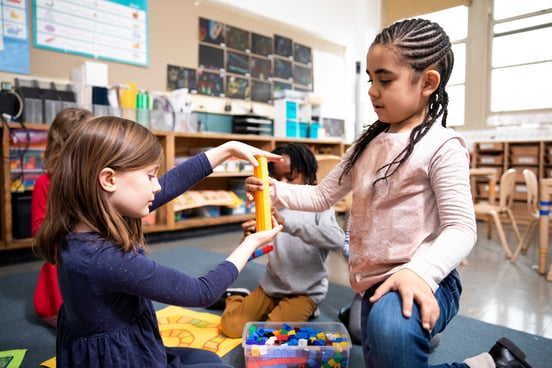
Math Assessment in California Schools: The Shift Toward Differentiated Instruction
Math assessment in California is changing. What used to be a compliance exercise or reporting tool is now becoming a...
Richard Kingham | Published December 14, 2020
Learning is a process that entails different levels of understanding. This is the basic idea behind Norman Webb’s Depth of Knowledge (DOK) model, which posits four tiers of understanding that students move through as they learn new content (but not necessarily in sequential order): recall and reproduction, skills and concepts, strategic thinking, and extended thinking.
Students can recall mathematical facts and processes. Performing tasks at this level may involve writing out the correct formula or defining a vocabulary term, but not solving problems or applying the word in their thinking.
Example
Select the circle from the group of shapes.
Students begin applying their knowledge in simple exercises that consist of two or more steps. Exercises may include comparing, organizing, and estimating.
Example
Read the following word problem and write the correct answer using repeated addition and multiplication.
“At the end of a snowy day, Genesis fastened her scarf around her neck and headed home. On her way home, she saw five snowmen that had been decorated while she was at school. Each snowman was made with three large snowballs. How many snowballs total were used to make the snowmen?”
Students solve problems that may have more than one way of getting the correct answer. This level demands more metacognition, requiring students to defend their decisions.
Example
Use a bar model, number line, or equal groups to solve the problem 24 divided by 6=?. Explain how they are similar and different.
Students apply their learning to creative assignments or research-based projects. They may design their own word problems or use new concepts to analyze and interpret data
Example
Create your own word problem using the equation 12x4=?.
Conclusion
DOK may consist of different levels of understanding, but try not to think of it as a strict series of sequential steps. Think of it rather as a framework that can be adapted to fit the needs of your students. Every student has a unique learning style, so for some of them, starting at level 3 or 4 may help them recall information or master the application of skills and concepts. Conversely, other students may benefit from working progressively through each level. As students work through the four levels of DOK in whatever order suits them, they will learn about their own learning style, further building metacognition.

Math assessment in California is changing. What used to be a compliance exercise or reporting tool is now becoming a...

You know the moment: a student’s eyes light up when the science experiment fizzes or the math puzzle helps them...

STEM classrooms are full of different types of learners in the classroom, each with their own strengths and needs.
...